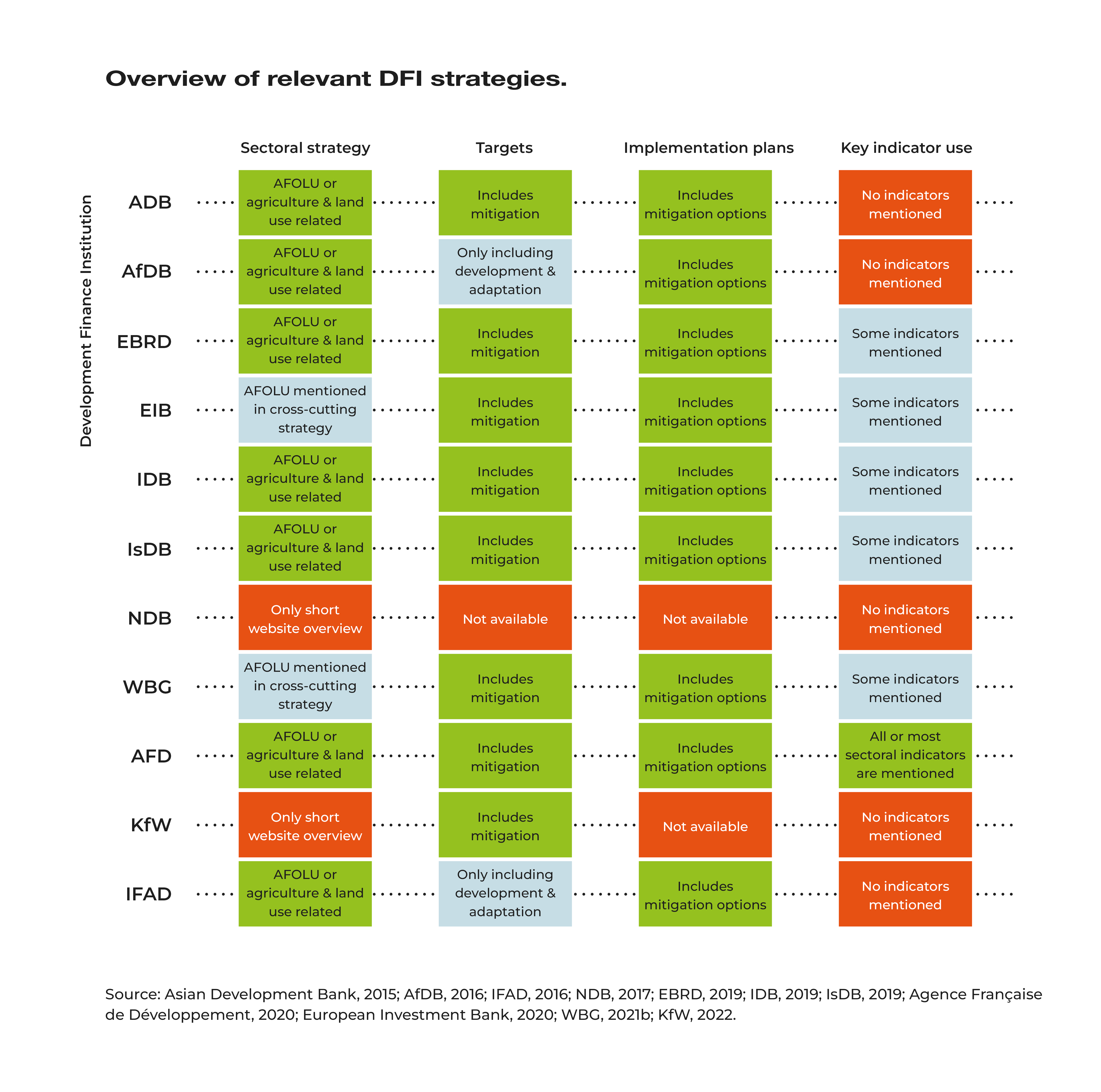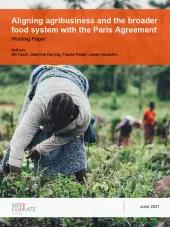Development finance institutions have a crucial role to help bring about the needed shift in global food systems and the land sector more specifically. They can support the implementation of more sustainable agricultural practices, the help their clients identify and mitigate climate risks along the value chain (for example associated with induced deforestation), and they can set up de-risking facilities to enable private sector investments into emerging industries such as alternative proteins. DFIs can also engage with the public sector to build capacity and support more ambitious climate policies. Without much more concentrated action on mitigating climate change and building climate resilience, the advancement of other sustainable development goals such as ensuring global food security and ending poverty will not be possible. DFIs have developed high-level joint frameworks to align their operations with Paris goals are still working toward refining and implementing them. One important remaining gap for DFIs is how they will engage and shift their land sector lending.
The Multilateral Development Banks’ joint framework for Paris alignment currently sets the bar too low for the land sector. Although partner country policies and priorities should be a priority area of engagement, current NDCs and LTS are insufficient to reach the Paris objectives and cannot be relied on to assess ‘Paris alignment’. MDBs and other DFIs can use sectoral 1.5°C-aligned pathways to better identify which activities they should support regardless of the level of ambition of countries’ NDCs. In a proposed ‘universally aligned list’, MDBs included several land sector activities such as non-ruminant livestock farming, fishing, and aquaculture. While these activities have a lower GHG footprint than ruminant livestock farming, they should not be considered ‘universally aligned’ as they may still have significant negative climate and environmental impacts.
The land sector strategies of key MDBs and other DFIs do not yet reflect a clear approach to Paris alignment. Instead, first and foremost, these strategies target economic development with a focus on developing markets and supporting agribusinesses. DFIs consider climate mitigation in most strategies, but focus excessively on efficiency gains rather than in transformative strategies for the sector. Despite some progress in identifying key improvement areas for the sector (such as the importance of reducing livestock-related emissions), a clear picture of a Paris aligned land sector is missing.

Land sector strategies need to be integrated into country strategies. Our analysis of Argentina, Egypt and Viet Nam shows that current strategies from key MDBs focus mostly on macroeconomic and fiscal policy aspects, and do not fully consider sectoral priorities. There is some progress in this area, with some MDBs already shifting towards a more encompassing approach to country strategies. However, to ensure that these strategies support countries to achieve Paris goals, they need to be anchored in 1.5°C-compatible pathways and identify and address barriers to make the most of opportunities at the country level.
Over half of the finance provided by DFIs in Argentina, Egypt, and Viet Nam since 2015 lacked sufficient safeguards to address climate risks. DFIs' private sector lending in all three analysed countries included projects where we identified potential risks of undermining Paris goals. Two common project types pose significant risks: (1) those where the activities supported would increase the production or sourcing of commodities which could drive deforestation due to insufficient value chain transparency, and (2) those which provided working capital finance to diversified companies with operations in sectors such as 1st gen biofuels, cattle and dairy, and/or operated in deforestation risk areas. Unaddressed risks in the value chain account for over 80% of finance flowing to high climate risk projects.
DFIs can fulfil their role as supporters of a land sector climate transition:
- By developing more ambitious sectoral strategies using tools such as sectoral climate pathways. We need clear vision of the necessary transformation in the sector to understand the adequacy of planned measures, and to support countries to align themselves with Paris goals.
- By better integrating climate and sectoral perspectives into country strategies. This can help translate ambitious sectoral strategies into impact on the ground, by allowing for a better identification of sectoral priorities adapted to country contexts.
- By developing more stringent criteria to classify economic activities into their positive and negative lists. DFIs need to align these criteria need with scientific research on the potential GHG-impact of specific economic activities to avoid undermining Paris goals.
- By improving safeguards for projects in the land sector to avoid supporting GHG-intensive industries and induced deforestation. MDBs can both set high standards to avoid induced deforestation and help the private sector develop more transparent mechanisms to account for the origin of their sourced commodities.





